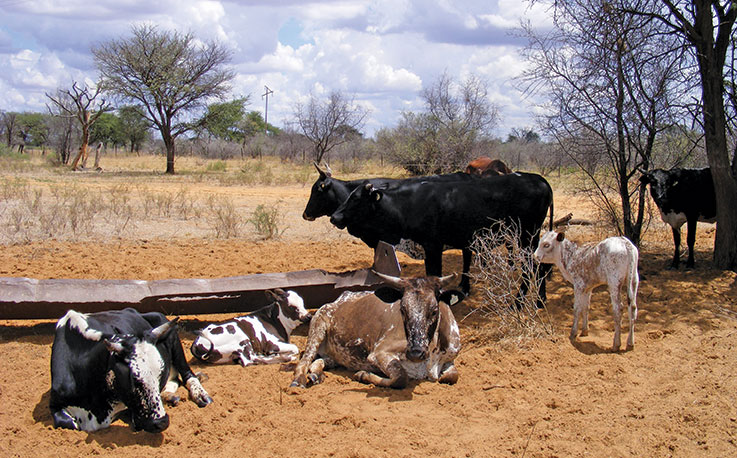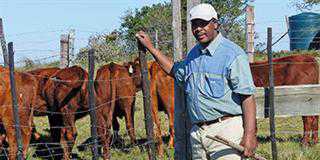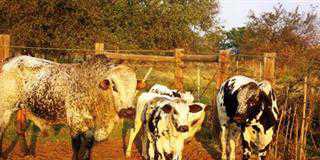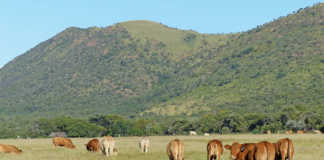
Photo: Annelie Coleman
How did the grass-fed beef movement evolve in South Africa?
Grass-fed beef refers to cattle that are allowed to forage and graze for their own fresh food. In 2014, the Grass-Fed Association of South Africa [GFSA] was launched in Bloemfontein.
READ Find the right market for your community
Despite previous failures by other organisations to get this initiative going, the changing socio-economic situation in South Africa and healthier lifestyle choices are considered effective drivers for the long-term sustainability of grass-fed beef production.
GFSA largely caters to commercial farmers. New and communal beef producers are yet to learn about the benefits of participating in this kind of enterprise.
Some researchers argue that communal farming in South Africa can by default be regarded as organic farming systems as these farmers mostly make use of very few, if any, chemical inputs, and their livestock often range freely over communal grazing areas.
There have been efforts in the past to mobilise communal farmers towards producing certified grass-fed beef. In 1998, for instance, the University of Fort Hare, in collaboration with rural development agencies in the Eastern Cape, initiated a programme to produce organic beef production by making Nguni cattle available to communal farmers.
Interested communities are given two bulls and 10 in-calf heifers to enable them to build up a nucleus herd.
Registered Nguni bulls are used to replace all the existing bulls in the community.
After five years, the community is required to give back to the project two bulls and 10 heifers, which are then passed on to another group of recipients.
READ Beef production: commercial Nguni success on leased land
One of the conditions of the project is that communities should have fenced grazing areas and a rangeland management committee, and must practise rotational grazing at prescribed stocking rates.
The long-term goal is to develop a niche market for communal farmers to supply certified organic beef.
How viable is grass-fed beef production for communal and emerging farmer?
The interest in grass-fed beef has increased exponentially during the past 20 years. Research shows that communal farmers are already supplying large numbers of grass-fed cattle to the informal market.
Local cattle breeds found among communal farmers, such as the Nguni, have huge potential to produce high-quality beef with virtually no chemical inputs.
Private sales of cattle by communal farmers remain the most important form of cattle marketing.
READ Finding value in cattle shows in an era of modern breeding
In a study involving 230 communal farmers in KwaZulu-Natal, which examined farmers’ choice of cattle marketing channels, it was discovered that private sales were responsible for 50% of cattle traded in the communal livestock farming sector.
In the Chris Hani District in the Eastern Cape, 85% of farmers interviewed preferred private sales as a marketing channel. This is because in private sales, farmers are able to negotiate for a better selling price, which they cannot do at auctions or abattoirs.
South Africa’s poor track record to successfully commercialise livestock production by communal farmers is cited as one of the reasons the country still imports significant volumes of beef, despite the fact that the output value of the industry increased from R13 billion in 2006 to R30,6 billion in 2016.
What are the practicalities of introducing the idea of grass-fed beef to communal farmers?
Although a typical grass-fed enterprise is less capital-intensive than a commercial beef production operation, it takes relatively long to reach a stage where income is generated. A cow, for example, is only marketable after two to three years.
This, nevertheless, resonates well with the business practices of communal farmers, as most are occasional sellers. What is required is the mobilisation of farmers into groups to form co-operatives, so that they can create clusters and develop value chains for supply.
READ Artificial insemination: ideal for communal farmers
There is also a need for skills transfer, capacity building and accessibility to market information. Communal farmers need to gain experience in negotiating deals with retailers and abattoirs, managing and monitoring costs associated with sales, and meeting the requirements set by the institutional environments.
What are the reasons for the slow commercialisation of communal cattle farming?
It is believed that communal farmers keep cattle as a livelihood security-safety net, with profit-making not necessarily being a major consideration.
This calls for an organisation such as GFSA to be innovative enough to find a balance between profitability and livelihood strategies if it wants to tap into the communal market.
Other than the model applied by the University of Fort Hare, there are opportunities for business models such as share-equity schemes, contract-growing and co-operative formations to include communal cattle in the formal commercial cattle structures.
Looking into issues regarding the environment, important factors to be considered include the types of breed that can be used in a grass-fed enterprise, the veld-carrying capacity and diseases.
There is overwhelming evidence that communal grazing is hugely overstocked.
The issue of overstocking and overgrazing is a management issue that requires government intervention.
Why has the production of grass-fed beef from the communal and emerging sectors not been realised yet?
There are concerns about the health status of communal cattle, but in my opinion their health status is fair, although attention should be given to the implementation of biosecurity measures.
READ The way forward with grass-fed beef
Because of the vast areas on which communal farmers operate, meeting supply quotas to retailers remains a challenge. However, initiatives such as those of the University of Fort Hare can overcome some of these.
What would be the best-case scenario for grass-fed beef by communal farmers in 10 years’ time?
The grass-fed initiative should be seen as a long-term strategy that seeks to address environmental and social aspects of the economy. In the best-case scenario, suitable agro-ecological zones, something like beef agri-parks, will be established in South Africa.
This should ideally be supported by a strong institutional framework comprising producer organisations, government institutions, NGOs and farmer co-operatives at grassroots level.
Email Joseph Kau at [email protected].













